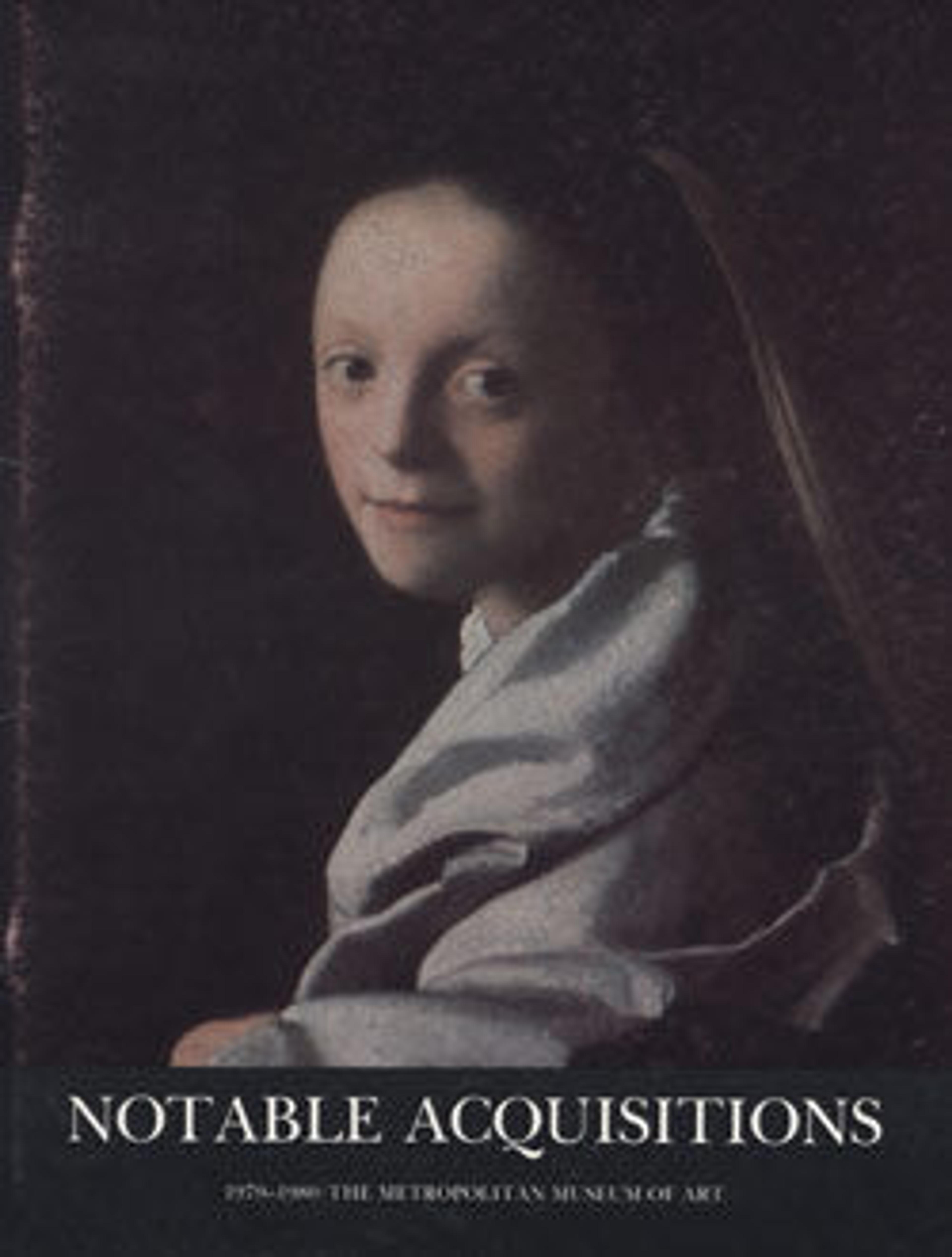Standing figure
The best-known aspects of the Jama Coaque culture are its ceramic vessels and figurines probably made for ritual purposes. Named for the modern towns of Jama and Coaque in the coastal lowlands of Ecuador's Manabí Province, they define its archaeological limits. Jama Coaque figures share similarities with other coastal sites of the period, but are often more richly clothed and elaborately adorned. Depicting warriors, musicians, hunters, and dancers, the figures were mold-made and have appliqué decorations that were made in smaller molds. Some figures are attached to vessels, but most are freestanding like this example. The backs of the figures were made by hand and not well finished, indicating that the figures were meant to be seen only from the front.
This bare-chested female figure wears a long skirt, a multistrand necklace with a sizable pendant, and a decorated head cover. The hole in the nasal septum once held an ornament likely of gold. The pale green pigment of the ornaments applied after firing, perhaps representing greenstone such as jade, turquoise, or even emerald, contrasts with the light brown of her torso and the darker brown of her skirt.
Dress and ornament were identifiers of clans and ethnic groups and markers of rank among many ancient American peoples. Information encoded in elements of clothing and jewelry would have been understood by the members of those groups.
This bare-chested female figure wears a long skirt, a multistrand necklace with a sizable pendant, and a decorated head cover. The hole in the nasal septum once held an ornament likely of gold. The pale green pigment of the ornaments applied after firing, perhaps representing greenstone such as jade, turquoise, or even emerald, contrasts with the light brown of her torso and the darker brown of her skirt.
Dress and ornament were identifiers of clans and ethnic groups and markers of rank among many ancient American peoples. Information encoded in elements of clothing and jewelry would have been understood by the members of those groups.
Artwork Details
- Title:Standing figure
- Artist:Jama-Coaque artist
- Date:240 BCE–450 CE
- Geography:Ecuador
- Culture:Jama-Coaque
- Medium:Ceramic, post-fire paint
- Dimensions:H. 13 × W. 6 3/4 × D. 3 1/2 in. (33 × 17.1 × 8.9 cm)
- Classification:Ceramics-Sculpture
- Credit Line:Gift of Margaret B. Zorach, 1980
- Object Number:1980.34.38a
- Curatorial Department: The Michael C. Rockefeller Wing
More Artwork
Research Resources
The Met provides unparalleled resources for research and welcomes an international community of students and scholars. The Met's Open Access API is where creators and researchers can connect to the The Met collection. Open Access data and public domain images are available for unrestricted commercial and noncommercial use without permission or fee.
To request images under copyright and other restrictions, please use this Image Request form.
Feedback
We continue to research and examine historical and cultural context for objects in The Met collection. If you have comments or questions about this object record, please contact us using the form below. The Museum looks forward to receiving your comments.
